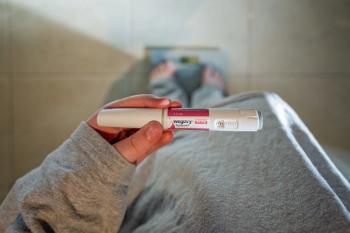
- August 2019 Back to School
- Volume 85
- Issue 8
Law Reduces Availability of Medications Subject to Diversion
The disposal act helps get rid of unwanted and unused prescription drugs in the home, and DisposeRx is one solution.
The secure and responsible drug disposal act of 2010, also called the Disposal Act, was enacted in part to address the increasing number of opiate-related deaths in the United States, specifically among teenagers.1 The act was an amendment to the original Controlled Substances Act of 1970. Between 2001 and 2005, the number of overdoses due to prescription opiates increased by 114% overall, and Congress found that one-third of all prescription drug abusers in 2006 were aged 12 to 17 years.1
Congress also discovered that many of these prescription drugs being abused were found in the home.1 This act was proposed to help reduce the amount of controlled prescription drugs available in American homes by providing convenient and effective ways to dispose of unused and unwanted controlled substances. In the original Controlled Substances Act, controlled prescription drugs (CPDs) could be returned to only authorized entities that had received permission from the Drug Enforcement Administration and required that law enforcement officers take the medication directly from the consumer.1 Because of the difficulty in finding available entities to dispose of CPDs, many consumers resorted to flushing unused and unwanted medication down the toilet, polluting water and causing harm to the environment.1
Congress created this legislation to encourage the attorney general to set specific parameters for CPD disposal so that both private and public entities could develop CPD collection services and prevent diversion and harm to the environment.1 Because of the Disposal Act, drug takeback programs became an option for disposal of both controlled and noncontrolled medications. These programs manifest themselves as drop boxes and national takeback days regulated by federal, state, and local law enforcement.2,3
Two of the main concerns with prescription drug takeback programs are the cost associated with implementation of a program or installation of a unit as well as the impact on day-to-day operations in the facility. In July 2010, the Senate Judiciary Committee called on the attorney general to establish parameters to measure the cost and ease of program implementation, and an amendment was put into place that stated that no entity was required to establish or operate a disposal program.1 This particular amendment relieved much of the apprehension of pharmacies about requirements to have a takeback program.
Over the past year, many large corporations have taken their own approach to reducing the availability of CPDs in the home. In January 2018, Walmart announced the distribution of DisposeRx, a small packet of ingredients available at no charge to the patient. When mixed with water inside a solid dosage form bottle, it allows consumers to dispose of their medication safely in the trash.4 Following suit, other major chains such as Kroger, Rite Aid, and Walgreens said their pharmacies would also adopt the DisposeRx option, again at no charge.5,6
Pharmacists play a critical role in counseling patients on how to take their medication safely, and this should include information about options for proper disposal of medications. Because of the increasing demand for affordable and convenient options for disposal of CPDs and non-CPDs alike, implementing counseling on DisposeRx, when available, is an easy and effective way to teach patients about the dangers of keeping unused and unwanted medications in their homes. Pharmacies that do not have DisposeRx on hand can direct patients toward prescription drug takeback boxes as the next-best option for the effective and safe disposal of medications.
Kennedy K. Powers is a PharmD candidate at the University of Kentucky College of Pharmacy in Lexington.
Joseph L. Fink III, BSPharm, JD, DSc (Hon), FAPhA, is a professor of pharmacy law and policy and the kentucky Pharmacists Association Endowed Professor of Leadership at the University of Kentucky College of Pharmacy.
REFERENCES
- Secure and Responsible Drug Disposal Act of 2010, Pub L No: 111—273, Stat 2858.
- Yeh BT; Congressional Research Service. Legal issues relating to the disposal of dispensed controlled substances. fas.org/sgp/crs/misc/R40548.pdf. Published October 19, 2010. Accessed May 12, 2019. 3. Disposal of Controlled Substances Collected From Ultimate Users and Other Non-Registrants, 21 USC §1317.30-1317.80 (2014).
- Walmart launches groundbreaking disposal solution to aid in fight against opioid abuse and misuse [news release]. Bentonville, AK: Walmart; January 17, 2018. news.walmart.com/2018/01/17/ walmart-launches-groundbreaking-disposal-solution-to-aid-in-fight- against-opioid-abuse-and-misuse. Accessed July 5, 2019.
- Antionette A. Rite Aid makes free opioid disposal solution available to patients. Drug Store News website. drugstorenews.com/pharmacy/rite-aid-makes-free-opioid-disposal-solution-available-to- patients/. Published May 21, 2018. Accessed May 12, 2019.
- National prescription drug take back day. Kroger website. kroger.com/topic/national-prescription-drug-take-back-day. Accessed May 12, 2019.
Articles in this issue
about 6 years ago
A Hospital and Physician Share Liability for Prescribing Opioidsabout 6 years ago
Motivational Interviewing Offers a Path to Improved Adherenceabout 6 years ago
Drug Shortages Raise Critical Safety Concernsabout 6 years ago
Case Study: Albuterolabout 6 years ago
340B Specialists Help Maintain Program Integrityabout 6 years ago
How Can Patients Prevent and Treat Fall Allergies?about 6 years ago
Case Study: Vitamins for Eye HealthNewsletter
Stay informed on drug updates, treatment guidelines, and pharmacy practice trends—subscribe to Pharmacy Times for weekly clinical insights.


















































































































































































































